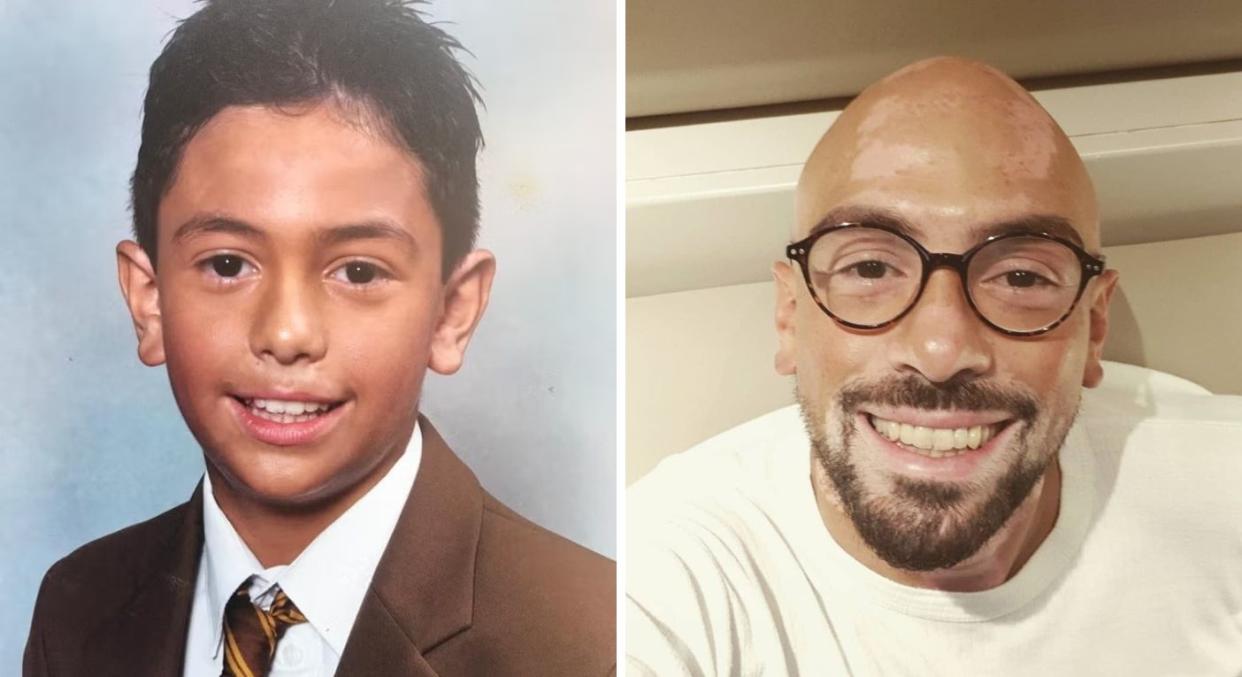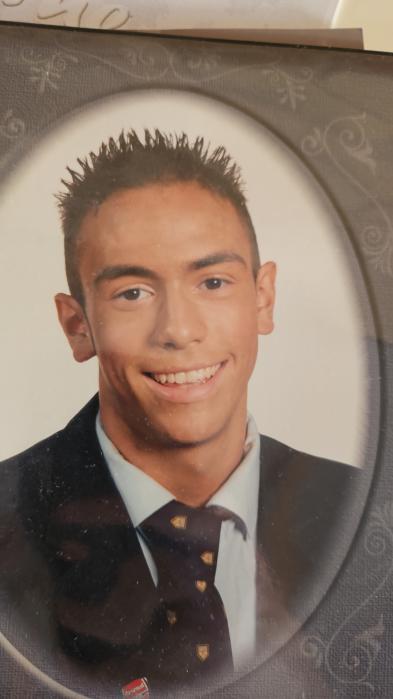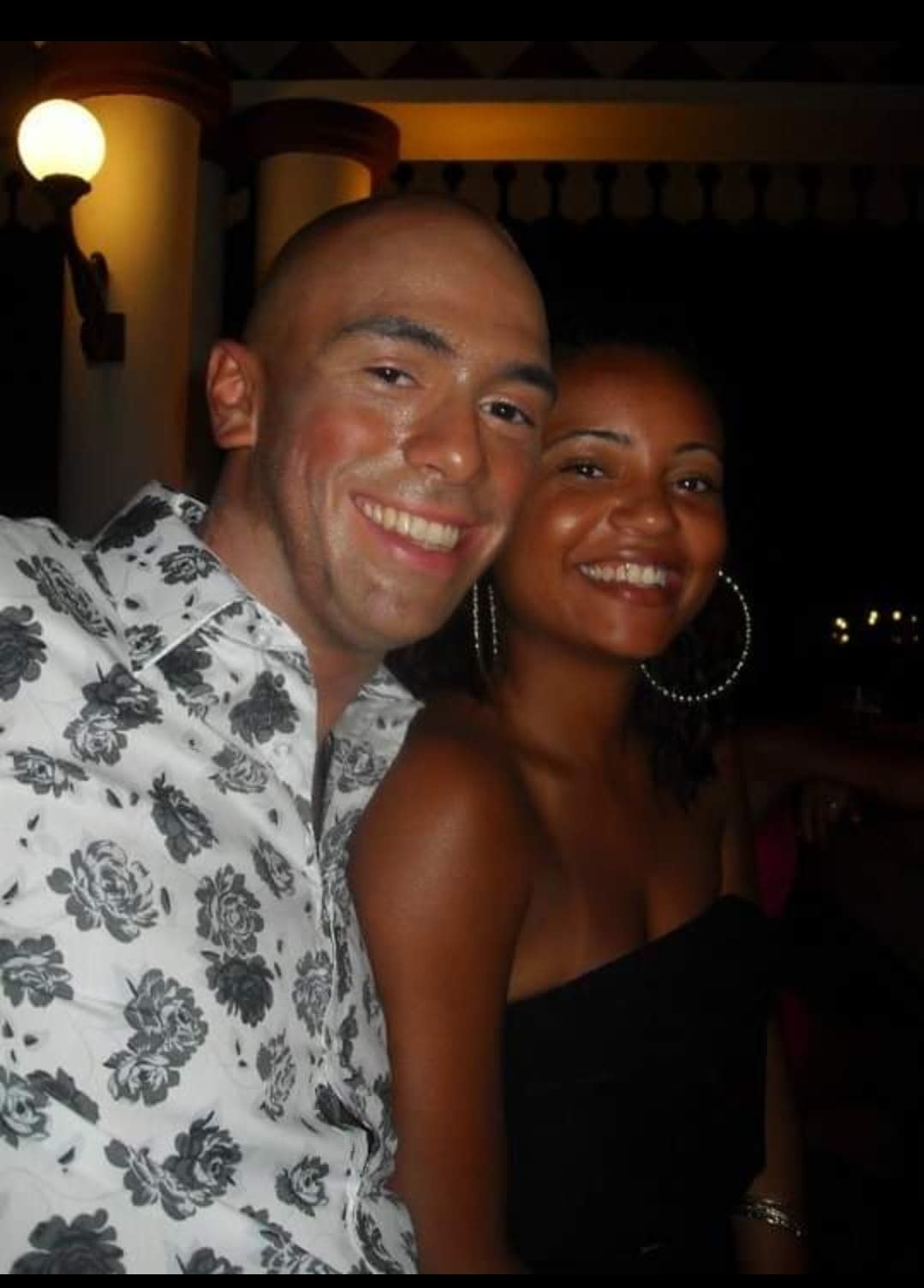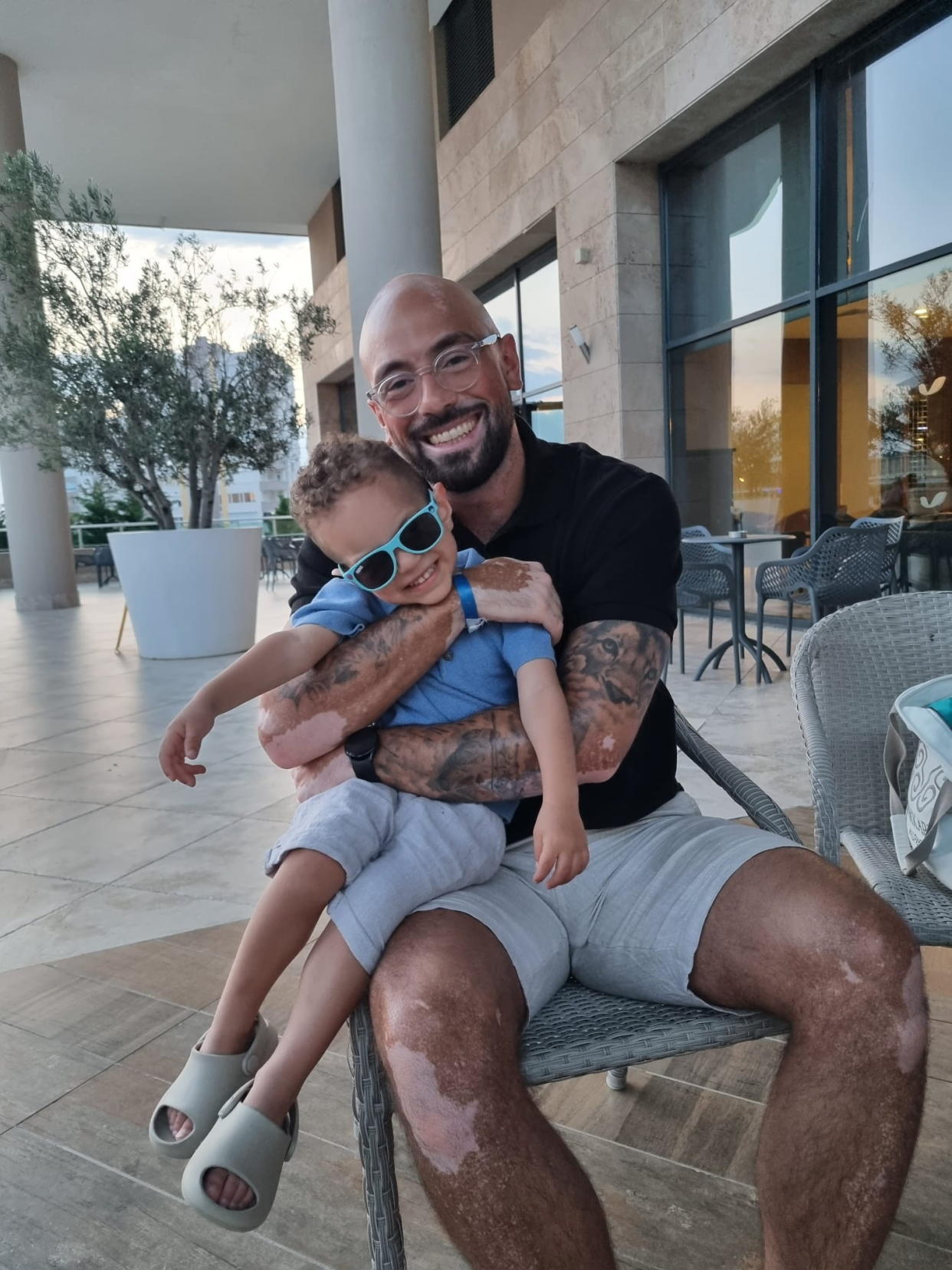Dad embraces vitiligo after wearing make-up and fake tan for 16 years

A dad who wore make-up and fake tan to cover his vitiligo for 16 years has shared how he finally learnt to embrace his condition.
Elj Abid, 35, from Witham, Essex, first noticed a discoloured patch of skin on his face when he was seven years old.
As he got older the patches spread over his neck, arms, hands and legs and he was diagnosed with vitiligo - an autoimmune condition where white patches develop on the skin.
In order to cover his vitiligo Elj started wearing make-up every day from the age of 11 and also used to use fake tan to hide his skin on holidays.
The now dad-of-two feared that if he didn't wear make-up he wouldn't be "fancied" or found "attractive".
But after meeting his now wife, Elj decided to forgo the "sweaty" make-up on his wedding day, aged 27, and he's never looked back.
"I used make-up from secondary school," Elj, who works in advertising, explains. "It gave me a sense of security.
"I felt like when I didn't wear make-up I didn't look attractive.
"As a kid you want to be liked and fancied.
"It took me a long time to love myself, but now I embrace it."

Elj initially spotted a small circular white patch appear on one side of his forehead, with the same then appearing on the opposite side a few months later, which he later learnt was because vitiligo is symmetrical.
The patches were not particularly noticeable until Elj reached year seven when they began to appear on other parts of his body.
While he wasn't bullied about his skin, he did face the occasional comment with some people referring to him as "panda eyes".
He tried various medications and treatments to try and "cure" his condition - such as drinking tree roots, light therapy and creams.
"I remember drinking a cup of mud," he adds.
As an adult Elj tried a cream which dehydrates the skin cells to bring back the original pigment which did help alleviate the patches.
But despite this, he says he still didn't feel confident enough to stop wearing make-up.

It was Elj's wife, Amy, 35, a data analyst, who played a big part in his self-acceptance - after they met aged 15.
"She made me see a different side of myself," Elj says of the turning point.
"I started to have make-up free weekends.
"There was a big shift as I got older. I got lazier. I couldn't be bothered to put on my make-up but I still used to put it on before work."
When the couple tied the knot in Jamaica, in June 2016, Elj realised he didn't want to look back on photos of the day and see how uncomfortable he was in make-up.
"It constantly makes you sweat," he explains.
A comment make by a friend of his wife also helped him have a change in perception.
"She said 'does Elj realise people are staring at him more because he's a man wearing make-up than because of his skin?'," he explains of the turnaround.
"I woke up the next day and went to apply make-up but instead I threw it all in the bin."

Becoming a dad-of-two to boys - aged one and three - was the final encouragement Elj needed to embrace his vitiligo.
"Because of the time that having kids takes up it doesn't even cross my mind," he says of his condition.
"I also want to make it clear to them [my sons] that vitiligo isn't a bad thing."
The condition does have a hereditary trait so there is a chance Elj's boys could also experience it.
"I want to make sure they are equipped to deal with it," he says.
"It isn't going to kill you."
What is vitiligo?
The NHS says vitiligo is a long-term condition where pale white patches develop on the skin.
It is caused by the lack of melanin, which is the pigment in skin.
Non-segmental vitiligo (the most common type) is thought to be an autoimmune condition.
In autoimmune conditions, the immune system does not work properly. Instead of attacking foreign cells, such as viruses, your immune system attacks your body's healthy cells and tissue.
If you have non-segmental vitiligo, your immune system destroys the melanocyte skin cells that make melanin.
The the condition can affect any area of skin, it commonly appears on the face, neck and hands, and in skin creases.
Vitiligo often starts as a pale patch of skin that gradually turns completely white.
While it does not cause discomfort to your skin, such as dryness, the patches may some times be itchy.
The condition varies from person to person and though some will only get a few small, white patches, others can experience bigger white patches that join up across large areas of their skin.
Though the white patches caused by vitiligo are usually permanent, there are some treatment options, which can reduce their appearance.
- If the patches are relatively small, skin camouflage cream can be used to cover them up.
- Steroid creams can also be used on the skin to restore some pigment, however long-term use can cause stretch marks and thinning of the skin
- If steroid creams do not work, phototherapy (treatment with light) may be used.
Although treatment may help restore colour to your skin, the effect does not usually last and treatment cannot stop the condition spreading.
Additional reporting SWNS.
Watch: Strictly's Rose Ayling-Ellis launches new diverse range of Barbie dolls, including a Ken with vitiligo.
Skin health: Read more
Vera Wang credits McDonalds for ageless skin, but Dermatologist warns against it (Yahoo Life UK, 4-min read)
Top foods to eat to combat rosacea and acne - and what to avoid (Yahoo Life UK, 4-min read)
I tried No7's new dermatologist-led skincare range before it launched and it exceeded my expectations (Yahoo Life UK, 6-min read)


